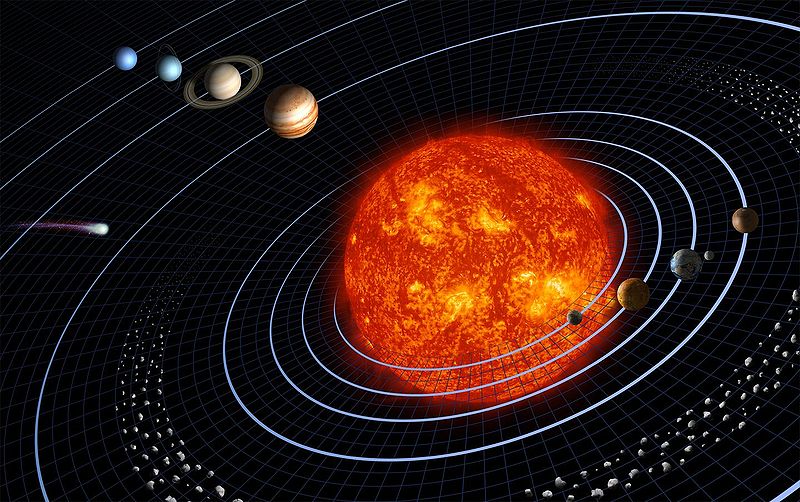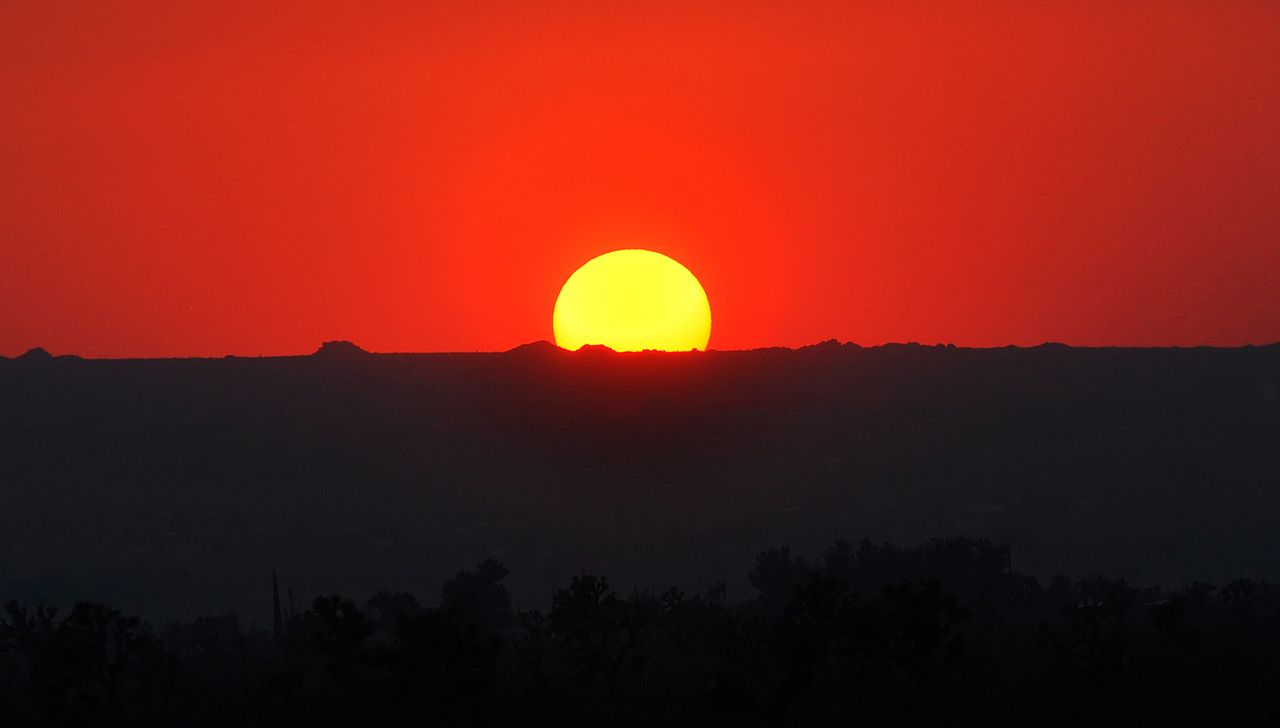
This star map shows the Houston sky at 10 pm CDT on June 1, 9 pm CDT on June 15, and dusk on June 30. To use the map, put the direction you are facing at the bottom.
The Big Dipper is above the North Star, with its handle pointing up. From that handle, you can ‘arc to Arcturus’ and then ‘speed on to Spica’; those stars are in the south at dusk. Arcturus is the fourth brightest star in the night sky, but the brightest one we see from Houston during all of June or July. (In summer, numbers 1 and 2 rise only in daylight hours for us, while #3 never rises in Houston.) Leo, the Lion, is high in the west at dusk. Jupiter is the left of Spica, in Libra.
Antares, brightest star of Scorpius, the Scorpion, is in the southeast, with the ‘teapot’ of Sagittarius rising behind it. Saturn is right above the teapot of Sagittarius. The Summer Triangle has fully risen in the northeast. The stars of summer are here.
Going On In Our Neck Of The Woods

The Solar System, (not to scale – actually very very far from the real scale – creating a scale image of the solar system with detailed representations of all its major bodies would not likely be feasible . Source: Wikimedia Commons.
Venus is higher in the west at dusk this month than in May. Look for it low to the horizon, over the point of sunset. Venus outshines everything in the sky but the Sun and Moon, so you can look for it even in twilight. Venus remains the evening star all spring and summer.
Jupiter was up literally all night long on May 8. It is now well placed for evening observing, in the south-southeast right as night falls.
Saturn is up all night long this month. That’s because on June 27, at 8:15 am, Earth passes between Saturn and the Sun on its faster orbit. This alignment, called ‘opposition’, puts Saturn in the sky literally all night around June 27. Already, we can see Saturn rise at about 10 pm. In a couple of weeks, Saturn will rise in twilight, and then right at sunset on June 27. This gives us three evening planets (Venus, Jupiter, and Saturn) by the end of June. Although significantly dimmer than Mars, Saturn outshines the stars near it, and is therefore just as easy to see.
Mars has now become brilliant, outshining all of the stars in the sky. By the end of June, Mars rivals Jupiter in brightness. Face southwest at dawn to see it.
Moon Phases in June 2018:
Last Quarter June 6, 1:31 p.m. New June 13, 2:43 p.m.
1st Quarter June 20, 5:50 a.m. Full June 27, 11:53 p.m.
The Summer Solstice!

Sun setting over the Mojave on the Summer Solstice 06-20-16. Author: Jessie Eastland. Source: Wikimedia Commons.
At 5:07 am on Thursday, June 21, the Sun is directly overhead as seen from the Tropic of Cancer. This means that Earth’s north pole is tilted as much as possible towards the Sun, making this our summer solstice. On this date the midday Sun is as high as possible in our sky—virtually overhead—and we have more daylight than on any other day of the year. Below the equator, the opposite is true. There, the midday Sun is as low as possible in the sky, and there is less daylight than on any other day of the year. For them, June 21 is the winter solstice.
George Observatory is open to the public once again! Come join us any clear Saturday night.
Clear Skies!






